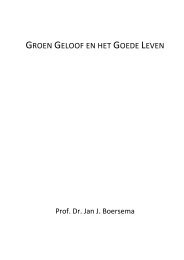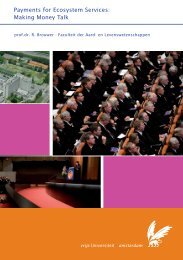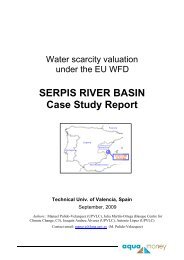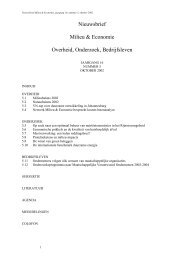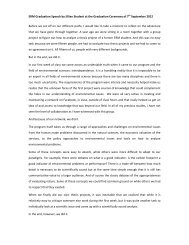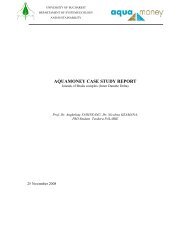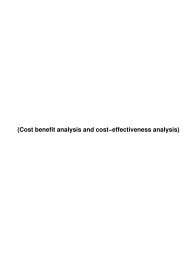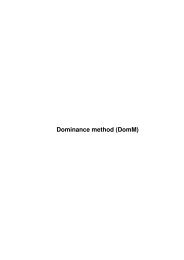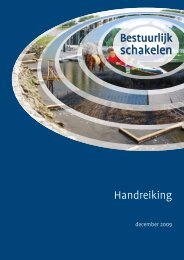Case study report Po Italy - VU University, Institute for Environmental ...
Case study report Po Italy - VU University, Institute for Environmental ...
Case study report Po Italy - VU University, Institute for Environmental ...
Create successful ePaper yourself
Turn your PDF publications into a flip-book with our unique Google optimized e-Paper software.
AquaMoney<br />
Table 21: Joint distribution: restriction in the future and expected years of restrictions<br />
Restrictions in the future<br />
Years of restriction in the<br />
next 10 years no, definitely not no, probably not don’t know/not sure yes, probably yes, definitely Tot<br />
1 13 13<br />
2 15 15<br />
3 21 3 24<br />
4 14 1 15<br />
5 28 6 34<br />
6 3 2 5<br />
7 2 2<br />
8 1 1<br />
10 6 1 7<br />
do not answer 29 38 67<br />
- 59 59<br />
Tot 29 38 59 100 16 242<br />
4.3 Estimated economic values <strong>for</strong> water resource management (CVM)<br />
In the Italian version of the questionnaire we also asked the maximum willingness to pay to have the best attributes<br />
level. In Table 22 the willingness to pay <strong>for</strong> the two attributes are derived as the average given by all respondents. The<br />
value of the willingness to pay is lower than values found in literature. In the previous parts of the questionnaire the<br />
importance about environmental problems results high but when we ask to translate words in money people are<br />
dubious. More than 15% of people are not willing to pay <strong>for</strong> measures to ensure the best level <strong>for</strong> the attributes. People<br />
giving wtp show a mean value equal to 36.04 €/year per household <strong>for</strong> environmental improvement and 34.44 €/year <strong>for</strong><br />
external water restriction.<br />
Table 22: Willingness to pay derived from CVM<br />
<strong>Environmental</strong><br />
improvement<br />
External household<br />
water restriction<br />
Mean<br />
(€/household)<br />
Median<br />
(€/household)<br />
Sd Frequency wtp =0<br />
36.04 30 39.37 16.20%<br />
34.44 25 44.87 18.30%<br />
Tot 70.19 52.5 79.83 14.90%<br />
4.4 Results of the Choice Experiments (CE) IT1<br />
In this section, we analyse results derived from the Choice Experiment method.<br />
In spite of the fact that the design, following the literature, tried to keep an easy understanding of the pictures and of the<br />
trade-offs involved, in our case many respondents had a not easy understanding of the mechanism of CE. The choice<br />
process was not simple <strong>for</strong> respondents and this represents one of the reason <strong>for</strong> the length of the survey. In fact the<br />
large part of time was spent to clarify attributes meanings and example card to interviewees. Difficulties arise because<br />
of the attributes definition and the status quo which is very far from reality.<br />
Be<strong>for</strong>e analysing the CE results, we propose in Table 23 the joint distribution between the status quo choices related to<br />
the credibility perception of the all scenarios presented. When people believe in the scenarios then they choose more<br />
frequently the status quo.<br />
12





